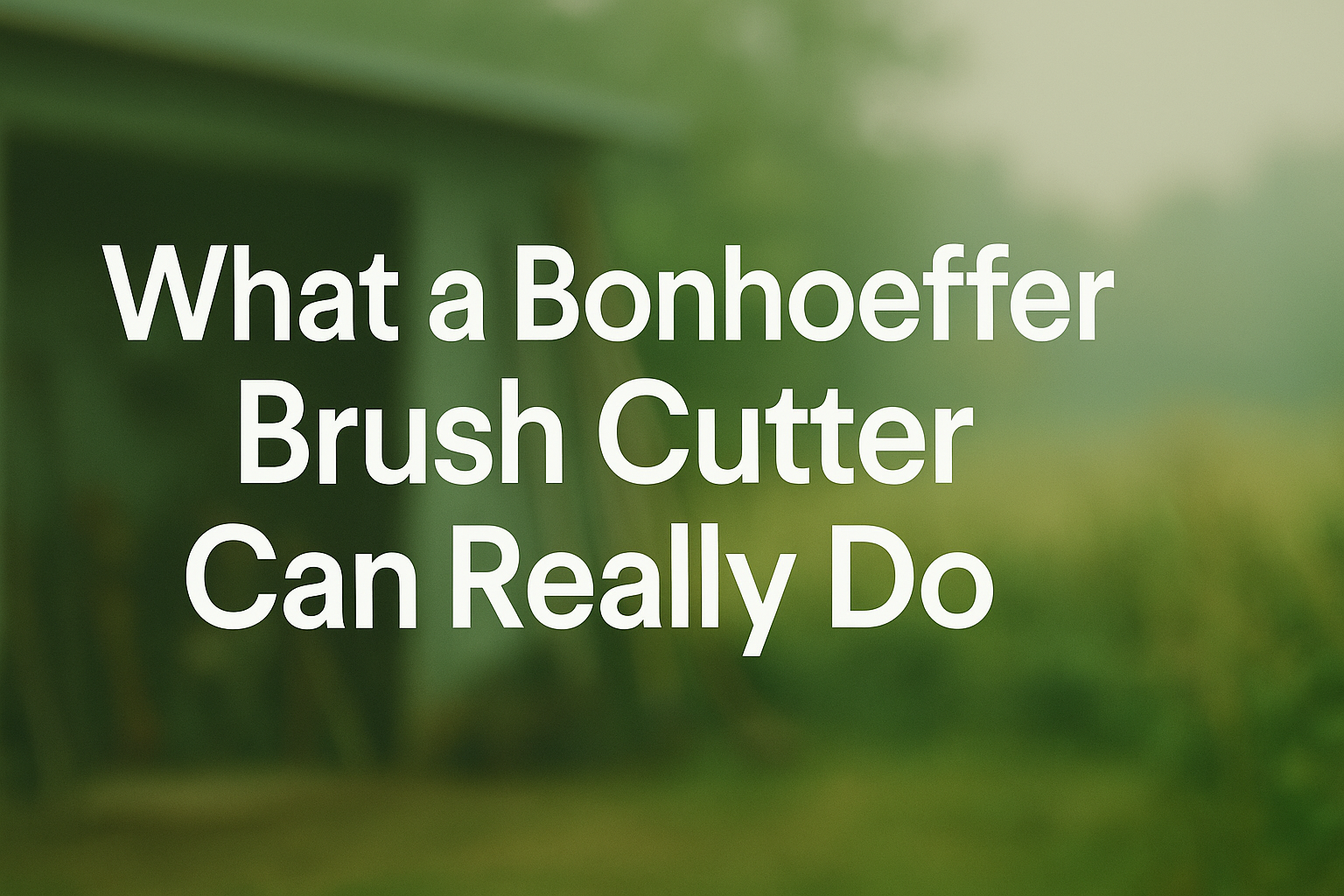
When grass is knee-high, weeds are woody, and edges have disappeared, a regular trimmer feels underpowered. A Bonhoeffer Brush Cutter is built for exactly this—mixed, stubborn vegetation where you need control, torque, and the right attachment. This post keeps it practical: what you can cut, which head to use, and how to set the machine up so it works hard without working you hard.
What exactly can it cut?
A brush cutter handles more than lawn grass. With the correct head and technique, it covers everything from soft weeds to small saplings.
- Grass and edges: Use a nylon line head to tidy borders and around stones or walls. It’s forgiving and ideal for daily maintenance.
- Tall, dense weeds: Swap to a 3–4-tooth metal blade for reeds, parthenium, or overgrown patches that wrap around line heads.
- Thorny, stringy brush (e.g., lantana): Go with an 8-tooth brush knife or similar multi-tooth blade. It bites cleanly through fibrous stems.
- Woody weeds and small saplings (up to ~2–3 cm): Use a circular saw blade (carbide teeth preferred). This is where a steady harness and smooth sweep matter.
Which power and shaft should I choose?
You’ll see models grouped by cc and shaft diameter. Think of these as workload and durability cues.
- 26–32 cc: Lighter machines for soft weeds and regular yard work.
- 32–43 cc: A versatile middle ground for mixed vegetation.
- 43–52 cc: Best for heavy weeds, brush, and occasional saplings.
Shaft diameter matters:
- 26 mm = agile and lighter for long hours.
- 28 mm = sturdier for heavier blades and thicker brush.
Engine type:
- 2-stroke feels lively and light; you mix fuel and oil.
- 4-stroke runs quieter with strong low-end torque; petrol and engine oil are separate.
Handle style:
- U-handle (bike) gives stable, sweeping motion on open plots.
- Loop handle is better around trees, fencing, and slopes.
Can it replace a mower, hedge trimmer, or chainsaw?
- Vs lawn mower: A brush cutter reaches places a mower can’t (slopes, ditches, uneven ground). For large, flat lawns, a mower still gives the most even finish.
- Vs hedge trimmer: Hedge trimmers shape bushes; brush cutters clear around them and deal with undergrowth.
- Vs chainsaw: For saplings and thick brush up to a limit, the saw blade on a cutter is efficient. For larger trunks, a chainsaw is still the right tool.
Maintenance you can do in minutes
- After every session: Brush off debris; check head/guard screws; inspect line or blade.
- Weekly: Clean or replace the air filter, check spark plug, and grease the gearbox if your model requires it.
- Monthly (or heavy use): Inspect fuel lines and primer bulb; sharpen or replace metal blades; refresh trimmer line.
A few small habits keep power consistent and prevent mid-job surprises.
Safety basics you shouldn’t skip
Face shield or goggles, ear protection, gloves, long pants, and boots. Keep a safe distance from bystanders, and never remove guards. If you’re switching to a saw blade, read the blade’s instructions and practice on soft wood first.
Conclusion: Cut faster, cut cleaner—without guesswork
A brush cutter only shines when power, shaft, and attachment match the ground in front of you. With the right setup—and spares close at hand—you clear more in less time, with less fatigue and fewer do-overs. That’s the whole promise of going Bonhoeffer: solid machines, sensible specs, and easy service.
Next step:
→ Check out Bonhoeffer’s Brush Cutters







